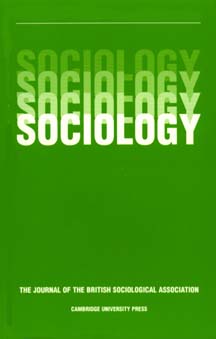LOOKING THROUGH THE WINDOW OF OPPORTUNITY: THE CULTURAL CLEANSING OF WORKPLACE IDENTITY
Published online by Cambridge University Press: 05 April 2001
Abstract
This article emerges from a project that examines the relationship between forms of labour, in the context of managerially directed organisational and cultural change, in a light engineering firm on Tyneside. This material is situated within contemporary and historical accounts of workplace interaction. The paper will address the new emphasis on culture and its manipulation, that is increasingly forming a locus of interest in current literature. Whilst stressing that there is much in these accounts that was common in earlier writing the paper draws out what is distinctive about contemporary concerns.
These issues are developed in the empirical account through an analysis of the manipulation of difference along the axes of gender, age and skill. The findings are located within a wider framework of the shift from post figurative to cofigurative culture. In this view there is a reworking of both the substantive relations between generations and in the form of relationships of age and gender.
The result of this analysis is an account which, whilst stressing the radical change that has taken place nevertheless recognises that even the ‘cleansed culture’ is subject to contradictions stemming from the employment relationship. Further, that within the context of the social reproduction of the workplace, shopfloor experience is chronically implicated in the construction of autonomous cultures. As such the analysis provides a more positive interpretation of resistance to such change than that available in many recent accounts.
- Type
- Research Article
- Information
- Copyright
- 1999 BSA Publications Ltd
- 29
- Cited by




